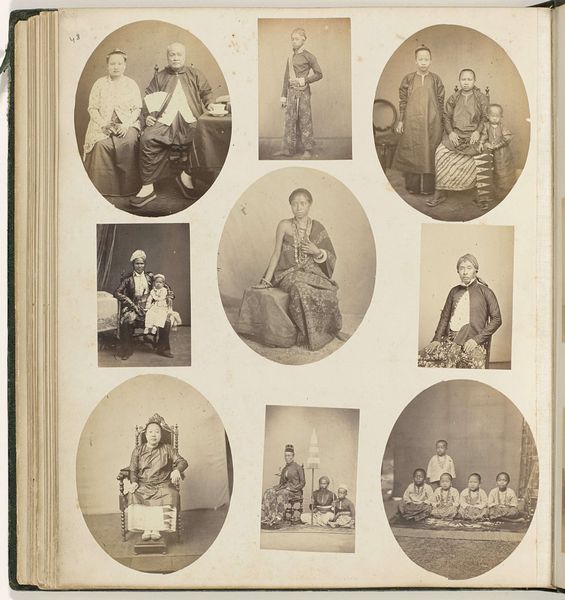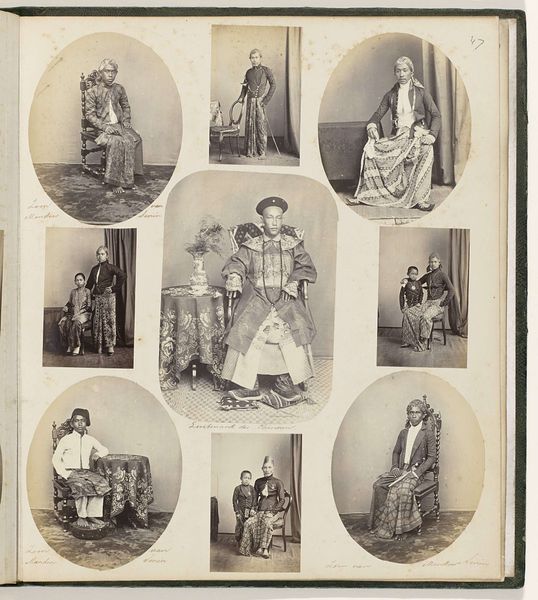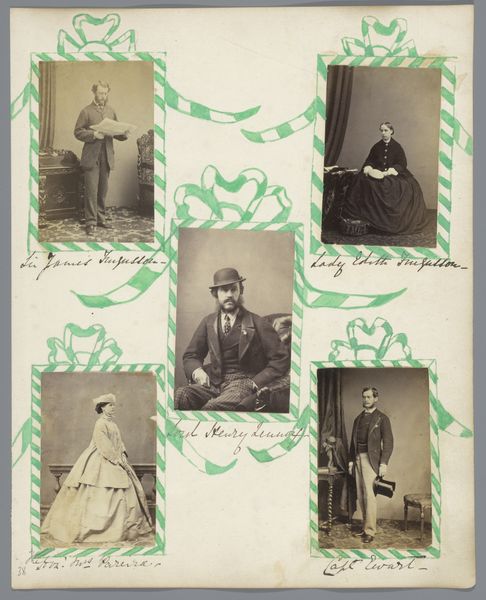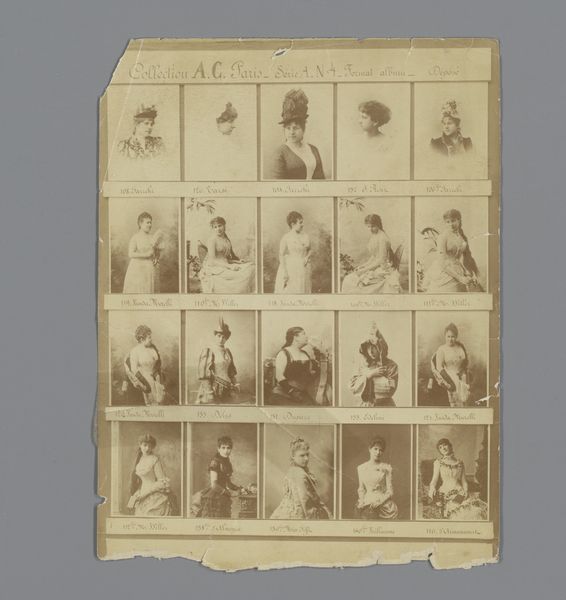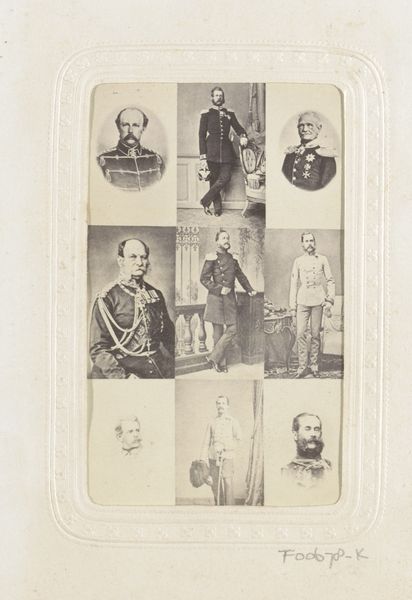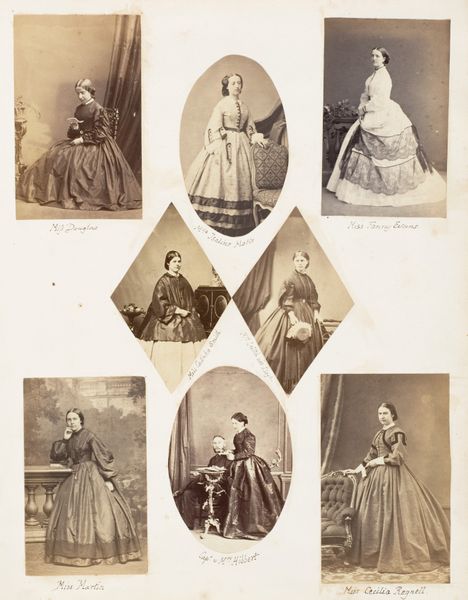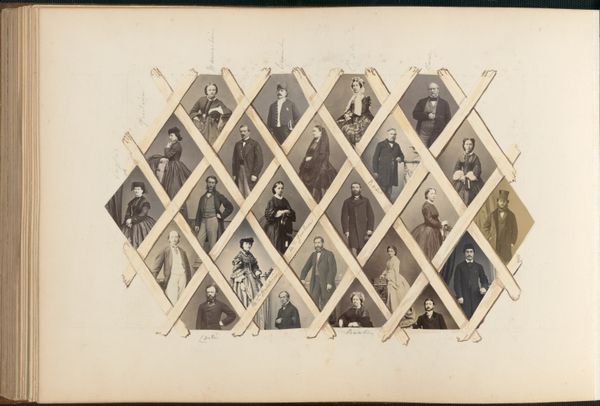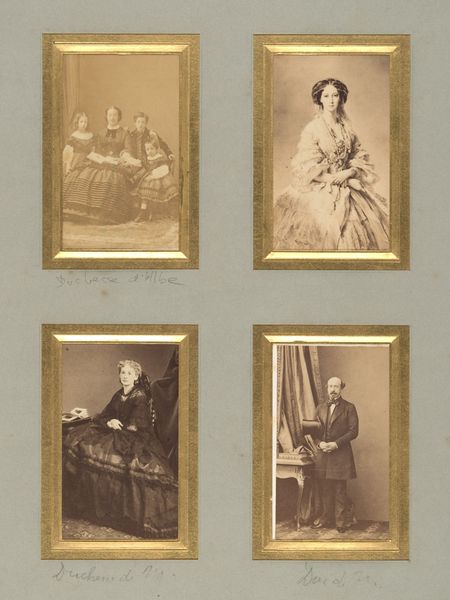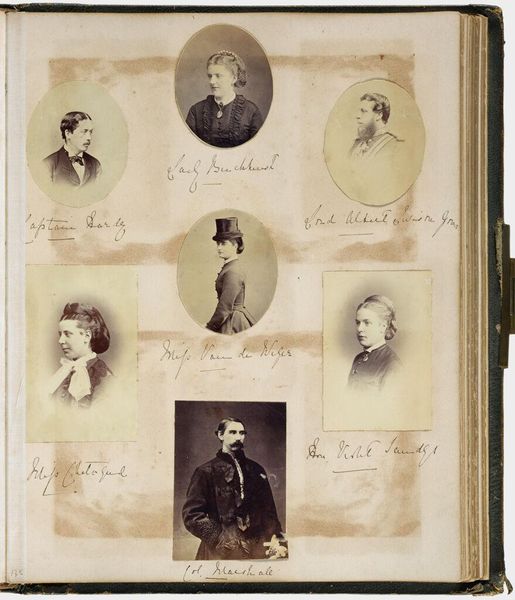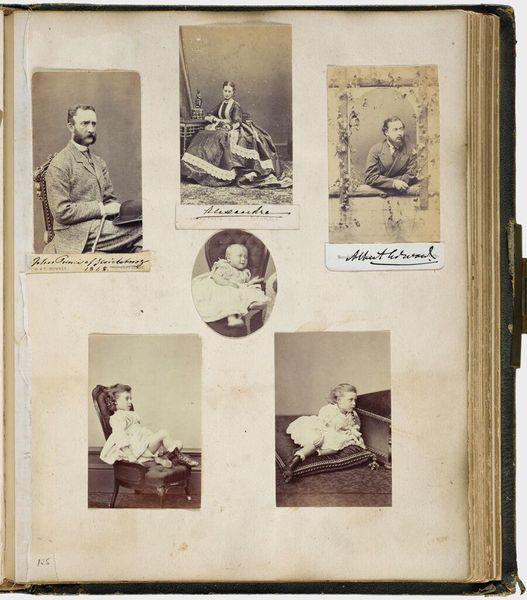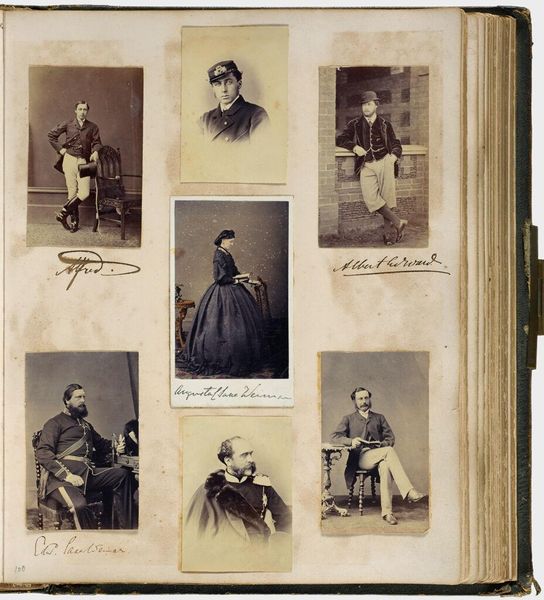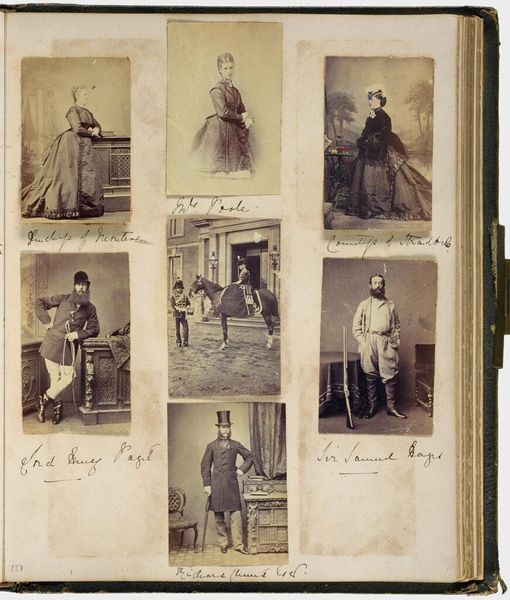
Portret van een Japanse minister van binnenlandse zaken, mogelijk Hijikata Hisamoto 1884
0:00
0:00
photography
#
portrait
#
asian-art
#
photography
Dimensions: height 83 mm, width 54 mm, height 240 mm, width 331 mm
Copyright: Rijks Museum: Open Domain
Editor: This photographic piece, dating back to 1884, seems to show a collection of portraits; I believe it's titled "Portrait of a Japanese Minister of Interior, possibly Hijikata Hisamoto," and strikes me as an official, yet intimate, gathering of people, mostly men. The brown tone gives it an antique look. How do you interpret this arrangement? Curator: Well, its construction as an organized collection of photographs tells us quite a bit about its social and perhaps even political function. What do you notice about who is being portrayed and how? Editor: I see men dressed in different attires - from western suits to traditional Japanese garments - with some, like the ministers, bearing what appear to be decorations and badges. In the lower portion of the tableau, there are figures seemingly poised as wrestlers. Curator: Exactly! Consider that the Meiji Restoration was rapidly transforming Japan at this time, with a great amount of governmental interest being focused on importing European political structures and associated aesthetics and values. Here, photography acts as a tool of documentation but also a form of promotion for these newly reformed institutions and a modern identity. So what do we make of the wrestler figures down at the bottom? Editor: Good point - the contrast is jarring - It's almost like they were using the medium to represent the old Japan at the bottom with the "new" Japan at the top? Curator: That's it, precisely. These were promotional objects and social calling cards for international trade, consumption and negotiation with western leaders. Also, consider who *isn't* in this portrait, especially with such focus given to representing the ministers of Japan. Editor: The way it shows Japan straddling tradition and modernity is fascinating. I hadn't thought about how intentional those inclusions – and exclusions – might be in shaping international perceptions. Thanks! Curator: Of course! It demonstrates the important role that art plays in the negotiation of cultural values and power on the global stage.
Comments
No comments
Be the first to comment and join the conversation on the ultimate creative platform.
